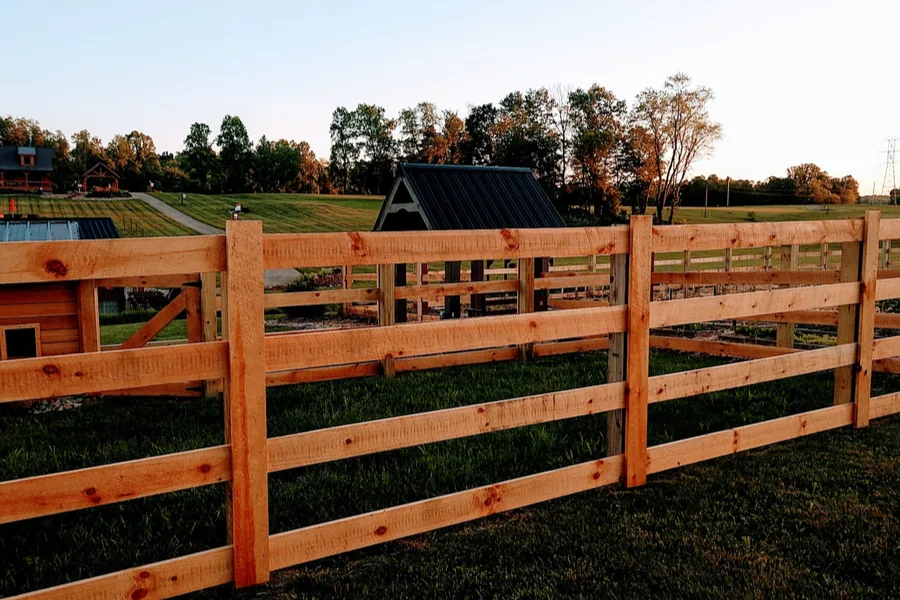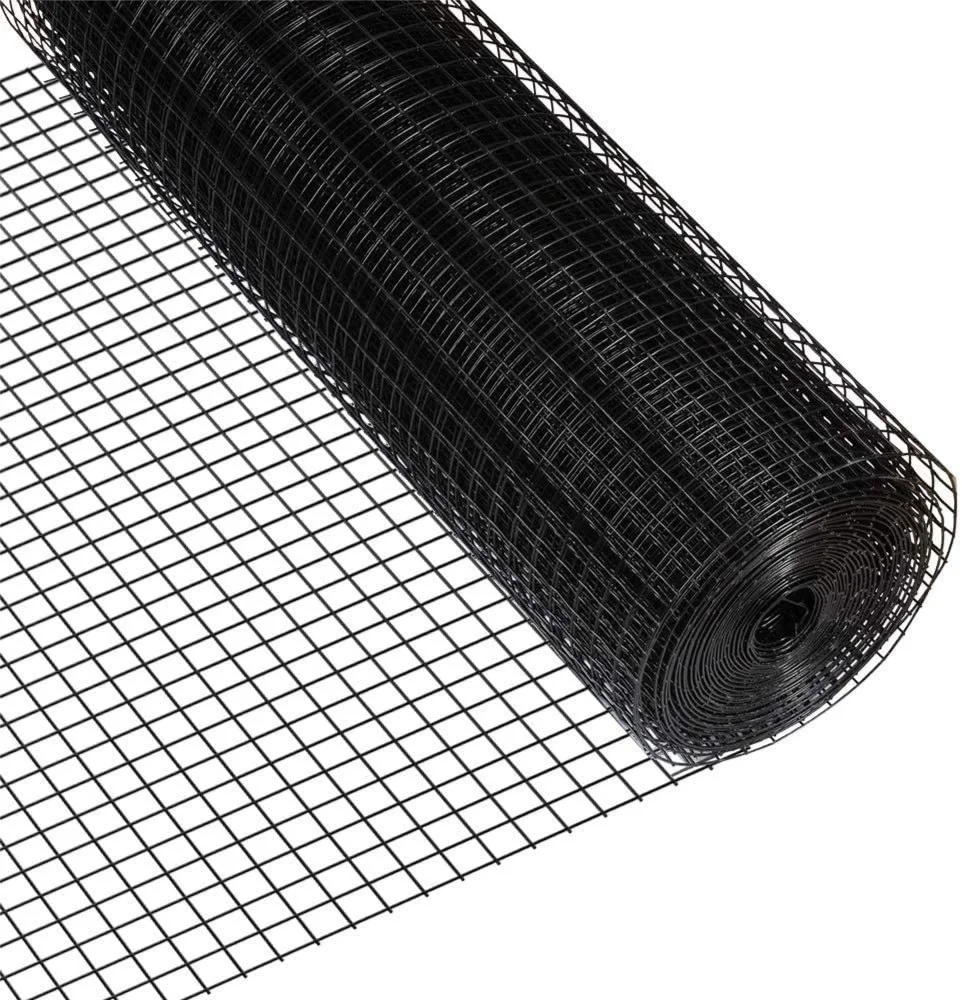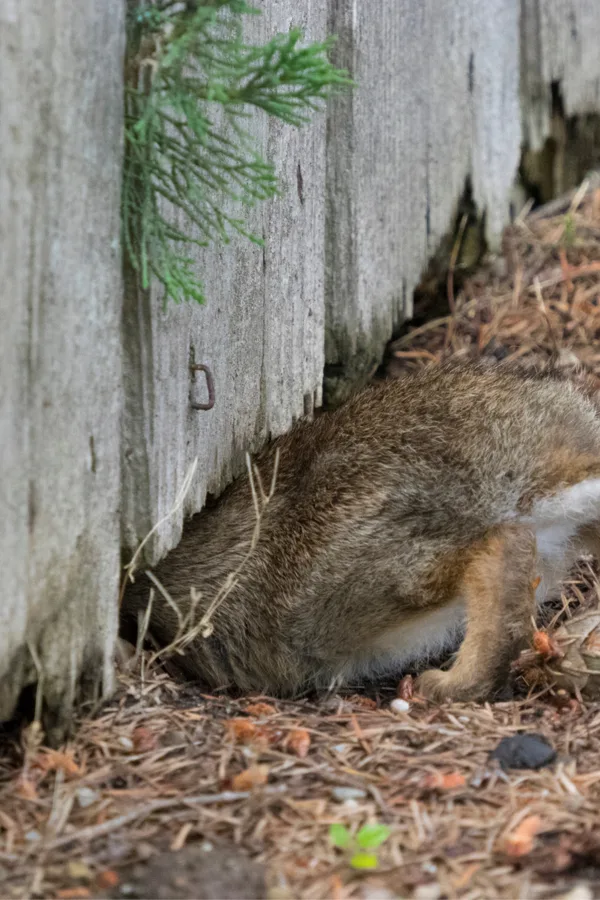Looking to build a garden fence that will keep animals out – and your vegetables and flowers safe from attack?
There is nothing more frustrating than losing vibrant, healthy plants to pests. One day your green bean and tomato plants are growing beautifully with a big harvest in sight – and in the blink of an eye, they are mowed down by wildlife!
Whether it is a deer devouring your sweet corn, or a pesky groundhog, rabbit or raccoon sneaking in to munch on fresh greens, losing a portion or all of your crop to animals is enough to make any gardener lose their mind.

Keeping Wildlife Out
There are certainly quite a few options in place of building a fence to help to repel wildlife. We have been using hot pepper spray with success for years to protect the perennials and annuals in our flowerbeds. By spraying the foliage of plants with the homemade concoction, most pests usually take one taste and quickly move on. (See: Hot Pepper Spray Recipe)
But although our homemade spray works well, it can be quite time consuming for continual use. After all, every time it rains or you water, you need to reapply the solution to keep it effective. And if you happen to have a large space, that can be quite the chore!
Companion planting is another great method for keeping certain pests away as well. Planting marigolds, nasturtiums and even garlic around other vegetables and flowers can indeed help keep plants safer.
These are all great methods for helping to control pest and animals. But again, they are certainly not fool-proof. Especially when you live in the middle of a forest with animals in every direction.

Unfortunately, that is exactly the case for our new garden going in at the new farm. In fact, we now live in the midst of what can only be described as wildlife central. And, without a properly sized and outfitted fence, we would merely be planting for them, and not our kitchen table!
Building The Right Fence To Protect Your Garden
When it comes right down to it, the only truly effectively 100% method for protecting your garden is with a proper fence. But the ultimate key to success is making sure you select the right fence for the job.
Selecting the wrong type will not only be ineffective in stopping wildlife, but also come at a considerable cost. Especially when you factor in the price of building materials these days. With that in mind, here is a look below at 5 of the biggest keys to make sure you create a garden fence that will work wonders in keeping animals out!

5 Simple Secrets To Building A Garden Fence To Keep Animals Out
#1) Selecting The Right Height For Your Fence
Make no mistake, the most important tip for creating an effective garden fence is to make sure it is tall enough to keep animals out. So how do you know how tall is tall enough?
If the invaders are rabbits and groundhogs, a two to three foot high fence is more than effective. Unfortunately, if you need to keep dogs, deer or even goats out, that height simply won’t work.

Before purchasing the first fence panel or post, determine what you are building your fence for, and who it will be designed to keep out. From there, it will be easy to select the materials for a proper fence. To help, below is a list of fence heights that will keep out the most common invaders home gardeners face:
- Cats – 6′ fencing
- Chickens – 6′ fencing
- Deer – 6′ fencing will repel most, 8′ is most effective
- Dogs – 4′ to 5′ fencing
- Goats – 5′ fencing
- Rabbits – 2′ to 3′ fencing
- Squirrels – 6′ fencing
#2) Fence Spacing – How To Build A Garden Fence To Keep Animals Out
In addition to making sure your fence is tall enough for protection, you also have to make sure pests and animals can’t get between the spacing within the fence. An electric wire fence might be great for keeping out deer or goats, but a groundhog can go right underneath.

Likewise, although a traditional picket garden fence may look incredibly beautiful enclosing your garden, the wide space between the pickets certainly won’t be very effective in keeping a rabbit, or squirrel out.
But here is the good news, it doesn’t mean you can’t have the picket fence look. You just need to make sure you can screen out the spacing between the pickets to keep it effective as a barrier.
For our garden fence at the old farm, we chose a post and rail fence for its classic look. Much like a picket fence, the spacing between the rails would have allowed a whole host of pests into the garden.
To fix that issue, we used black welded wire mesh netting attached to the inside of the fence. We will be building the exact same fence this spring at the new farm as well.
Why Welded Wire Mesh Works…
Welded wire mesh fencing is one of the most durable and effective garden fences around. It can actually be used on its own with simple fencing stakes to hold it in place. But it also works great for attaching to traditional fencing styles to completely secure an area. And, in most cases, it blends in so well you can barely see it at all!
For our fencing at the farm, we are using a 6′ high, black, vinyl-coated welded-wire mesh fencing roll with a 1″ x 1″ grid pattern.

We love the 1″ x 1″ grid pattern because it really eliminates any issues with rabbits, squirrels and more. The welded wire options are a little more pricey up front, but they can last for 20 years or more. More importantly, they work like a charm! Product Link : 6′ High, 1×1″ Grid Black Welded Wire Fencing Roll
#3) Protect The Bottom From Entry – How To Build A Garden Fence To Keep Animals Out
Much like the area in between your fence, it is important to secure the bottom of your fence too!
In fact, if there is one area where most garden fences fail, it is at the lower part of the fence. No matter how high, sturdy, or closed off a fence might be up top, if an animal can sneak though at the bottom, it is all over for your crops.

The best way to accomplish this is to bury your fencing or a barrier down into the ground to prevent any animals from burrowing under. For maximum protection, dig down to bury the barrier to a depth of six inches. Most animals simply won’t dig below this depth, and they will give up before getting inside.
Once again, the mesh fencing barrier works well for this. Galvanized or stainless steel hardware cloth also work great for burying. Neither will rot, and both form and effective, long-lasting barriers. Product Link : Hardware Cloth Roll
#4) Secure The Gate! How To Build A Garden Fence To Keep Animals Out
Another access point that can cause problems for gardeners is the gate area. Many gates don’t close completely, are shorter in height, or have gaps at the bottom where animals can get through.
When selecting a gate, make sure it covers all of these issues, and more importantly, make sure it can close with a secure latch. All it takes is one windy day to blow open a fence, and the animals will be on their way inside to dine.

Finally, and this is important, make sure your gate is easy to open and close. If the gate becomes difficult to operate, more than likely you or other visitors to the garden will tend to leave it open. And believe me when I say the animals and pests will notice that!
#5 Use Quality, Durable Materials – How To Build A Garden Fence To Keep Animals Out
Last but not least, success all starts and ends with using quality, durable materials. Unfortunately, thin chicken wire, plastic fencing and even lightweight wire fencing will all quickly become ineffective. Not only can they tear and break easily, animals can also break through them with ease.
The end result is losing the crops you tried so hard to protect – and losing your initial investment. Spend a bit more up front, and in the end, you will be rewarded with a fence that stands the test of time. Here is to building a classic DIY post and rail fence for your garden. And even more – building it to last! Happy Gardening – Jim and Mary.
Jim and Mary Competti have been writing gardening, DIY and recipe articles and books for over 15 years from their 46 acre Ohio farm. The two are frequent speakers on all things gardening and love to travel in their spare time.
As always, feel free to email us at thefarm@owgarden.com with comments, questions, or to simply say hello! You can sign up for our free email list in the subscribe now box in the middle of this article. Follow us on Facebook here : OWG Facebook. This article may contain affiliate links.
